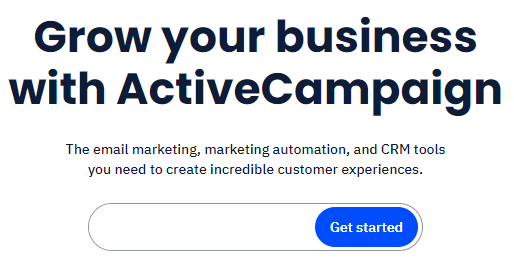
Having a strong and creative social media presence is crucial in terms of reaching your target audience, as social media platforms serve as the primary means of doing so. Given that 59% of the global population uses these platforms daily, it presents an ideal opportunity to earn effortless affiliate commissions.
We have created a compilation of the top social media platforms for affiliate marketing in order to assist you in achieving your goals in this area. We will describe their functionalities and guide you in selecting the most suitable one for your affiliate objectives. By promoting your affiliate links on the appropriate platform, you will be successful in affiliate marketing on social media.
How Affiliate Marketing on Social Media Works
Thriving in affiliate marketing on social media is as simple as it is convenient, but understanding your target audience and what captivates them is crucial.
To exhibit their affiliate products, majority of the affiliates establish their own website or online store, which requires visibility and attention to attract visitors. That’s where social media platforms enter the picture and prove beneficial.
Social media platforms such as Instagram, Facebook, and Pinterest provide ideal avenues for executing affiliate marketing strategies for websites like Etsy, eBay, or Shopify. By presenting high-quality product listings and displays and crafting captivating content, you can prompt users to click on your posts and affiliate links, thereby earning commissions as a result.
1. Facebook
Many affiliate marketers consider Facebook to be one of the top platforms due to the numerous opportunities it provides for natural, unpaid promotion.
Affiliate managers can modify their messages on other platforms with Facebook, often without any cost. Additionally, there are numerous post formats available for affiliate marketing endeavors, as text, images, and videos can be blended in diverse ways.
Facebook can be utilized for affiliate marketing at a minimum of four different levels.
If you have a robust personal brand, you may opt to utilize your personal Facebook profile in divulging details about the merchandise you endorse. Keep in mind that privacy settings should be adjusted accordingly.
Facebook pages are frequently employed by affiliates as a way to distinguish their personal and professional lives. These pages can be utilized to effectively promote an affiliate’s offerings and enhance their audience, interaction, and website traffic. Furthermore, unlike posts on personal profiles or within Facebook groups, paid campaigns can be utilized to advertise content on a Facebook page.
With Facebook’s growing emphasis on communities, there are now numerous opportunities for affiliates to promote their products within Facebook groups. While selling items can be profitable, creating a community centered around a particular subject could have even greater advantages for an affiliate marketing plan in the long run.
The Marketplace is a Facebook tool that enables promoting products for sale and is available to local affiliates in smaller regions.
Paid campaigns on Facebook come with comprehensive choices that enable you to target new clientele and existing patrons consistently. You can also label merchandise in shoppable posts to facilitate seamless transactions for your buyers. Subsequently, re-engage them with retargeting promotions if they haven’t completed their purchases.
Irrespective of your niche, Facebook can be utilized, but caution is necessary. Reading through the Advertising Policy is important as it outlines industries in which advertising may be limited. Although this primarily affects paid content, it can also have an impact on your natural actions.
2. Instagram
Not just young people, but Instagram is also becoming more popular with other age groups. In fact, based on Statista’s findings, 33% of Instagram’s users are between the ages of 25 and 34, while 16% are aged between 35 and 44.
Typically, Instagram is most effective for B2C sectors in specialized fields such as beauty, fashion, travel, cosmetics, and food.
Sharing visual content such as photos and videos is the primary feature of Instagram. Affiliate marketers should comprehend this aspect of the platform to suit their tactics. Keep in mind that viewers on Instagram usually have limited time to engage with your content as they are likely to be occupied with a lot of other posts.
The content below can be utilized to capture the attention of your audience:
Utilizing Instagram stories to display a product, service, or event with an assortment of tags, filters, and supplementary functionalities.
In order to enable the feature of tagging your products on shoppable posts, you must first create a catalog of your products on Facebook and then switch to an Instagram Business Account.
The option to Swipe up on Instagram Business accounts allows Stories viewers to go to a promoted site. It can either be obtained through paid promotion or reaching 10k followers.
The option to create Highlights on Instagram enables you to archive your Stories, making it possible for your followers to view them beyond the 24-hour time limit.
Using links in your bio can help increase traffic to your affiliate website. Instagram’s bio section is the sole area where you can attach a direct link to your website, so it’s vital to utilize this space effectively.
Merely posting content alone may not suffice; you may have to augment it with paid advertisements to enhance its scope. Additionally, it is vital to engage with your probable customers on Instagram.
3. YouTube
Creating videos is a requirement for affiliate marketing managers on YouTube, which can be challenging for affiliates with limited time and resources for producing, releasing, and marketing them.
Videos can prove to be exceedingly advantageous, as is evidenced by the statistics.
- 83% of marketers who use video in their promotional activities say they have helped generate leads. (MARKINGBLOG)
- Online videos will make up more than 82% of all consumer internet traffic by 2022, which is 15 times higher than it was in 2017. (Cisco)
- 64% of consumers will make a purchase after watching branded videos on social platforms. (Tubular Insights)
Those who plan to resell software, create tutorial videos or hold Q&A video sessions as part of their affiliate marketing strategy may find YouTube to be the most suitable social media platform.
Observing giveaways and unboxing videos on YouTube can be a valuable resource for affiliates advertising beauty products. With a vast audience already tuned in, there is a high probability that your videos will attract a considerable number of views as well.
Moreover, one advantage of producing YouTube videos is their potential for repurposing. You can distribute them on various social media platforms, your website’s homepage, or incorporate them into your email correspondences.
While Pinterest is primarily recognized for its provision of inspiration and ideas for do-it-yourself projects, home decorations, and desired purchases, the platform is also a highly effective search engine with great potential.
Pinterest’s positioning outranks all other platforms when it comes to Google Search.
Pinterest is usually at the top of Google’s search results due to its image-centric content, making it a prime platform for your audience. Proper utilization of Pinterest can reap positive outcomes. Here’s how to apply affiliate marketing links on Pinterest:
- Create product collections
- Post product reviews and descriptions
- Post infographics
- Create checklists
- Post promotional materials
5. Twitter
Twitter primarily caters to individuals capable of catching attention with concise and impactful phrases or words. With its 280-character restriction, Twitter necessitates wit and catchy promotions that quickly convey the message. Although the restrictions may not suit everyone, Twitter is a generous platform that offers free traffic for your affiliate requirements.
Count on humor to captivate your audience. Although sincere messages are acceptable, it’s simpler to engage an audience with amusing material and captivating headings. These components bring a personal dimension to affiliate promotions and present you in a more amiable manner.
In order to gain a reputation of reliability and trustworthiness, it’s important to share not only details about the product, but also about yourself. Offer a glimpse into your personality and expertise related to the products and services you endorse to potential customers.
To enhance your discoverability on Twitter, utilize hashtags. They can aid in reaching out to potential clients, increasing your following, and generating new leads. Take advantage of trending hashtags by utilizing them to their fullest potential.
6. TikTok
TikTok offers the opportunity to display your talents and creativity through brief videos. You can effectively monetize your content by promoting affiliate goods, unique deals, and links, and potentially achieve viral fame without having to appear on camera.
Explore the optimal timings for sharing content on TikTok, stay updated with the latest trends, incorporate filters and effects for enhancing your posts, and connect with a diverse audience of all ages. Even if your focus group is Gen Z, it’s worthwhile to experiment with this platform.
How to Pick the Best Social Media Platform for Affiliate Marketing
To effectively generate the desired clicks, it is important to recognize that not all social media platforms will engage your intended audience. It is necessary to pair your products with the appropriate customer group. What approach should you take to accomplish this?
Go Where Your Customers Are
In order to achieve success as an affiliate, you need to be proactive in reaching out to people rather than expecting them to seek you out. To effectively advertise your affiliate products and connect with the appropriate audience, make a point to share your content in places where people are already present.
It is crucial to consider that Facebook has been identified as the top social media platform in 2022, hence when devising a plan for your affiliate marketing posts make sure to take this into account.
Research the Competition
It is important to conduct a thorough investigation to determine if your competitors are advertising comparable affiliate products and services. It is essential to ascertain where these offerings are being advertised, as well as the level of engagement and response they are receiving across different platforms. Lastly, you should consider what sets you apart and how you can differentiate yourself from the competition.
By scrutinizing your rivals, you can make enlightened choices and enhance your affiliate marketing tactics when selecting the appropriate social media channel.
Get to Know Each Platform
There are numerous social media platforms available for experimentation; however, if you want to excel in affiliate marketing, do not expend your time and energy on all of them. Instead, evaluate each platform’s characteristics, benefits, shortcomings, and boundaries to refine your options.
Conduct a thorough analysis of the available platforms and choose one based on your affiliate products and abilities. To illustrate, Twitter has a constraint of 280 characters per post, which may not be suitable for you if you prefer to express yourself in detail and promote your products.
Come Up With a Content Strategy
To more precisely filter your social media platform options, create a content strategy. Determine the type of content you wish to share and its frequency. For instance, you should upload fresh TikTok videos 1-4 times daily and according to YouTube, publish more than three videos per week.
Do you excel in producing videos, reels, blog posts, or images? Strategize your content creation and utilize the features available on each platform to produce captivating and attention-grabbing content, increasing traffic to your site.


